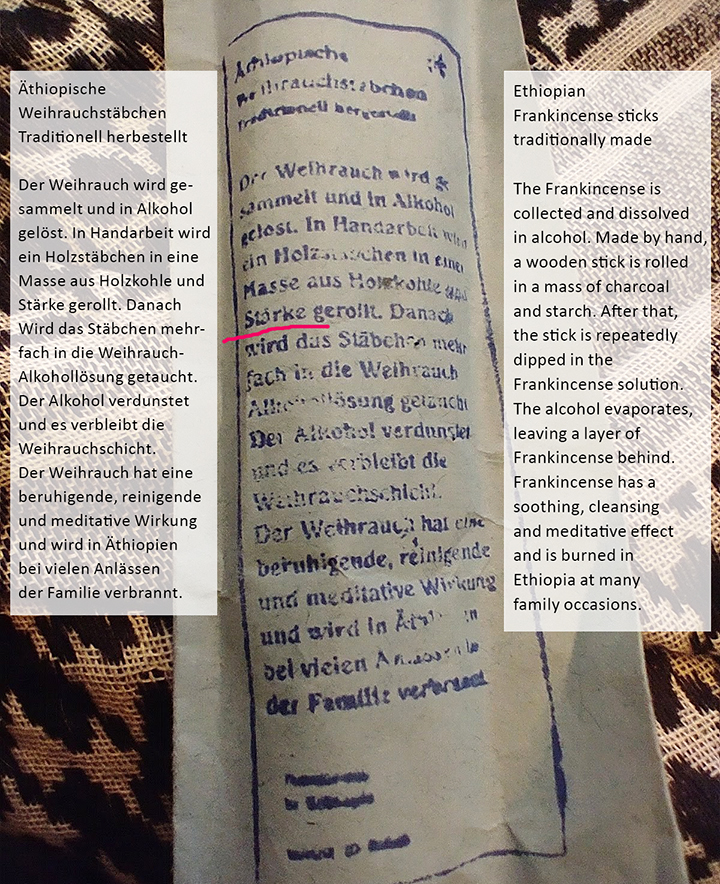Ethiopian Frankincense Sticks
In early 2023, Steve (Incense in The Wind) wrote me an email asking if I knew anything about these Ethiopian frankincense sticks or had ever seen them. The packaging seemed vaguely familiar to me. I thought I had seen it in some picture before, especially those distinctive glyphs were stuck in my mind. Unfortunately, I couldn’t really help Steve, but at least based on one of his pictures, I was able to decipher the blurry print.
Later, during our incense exchange, he sent me a stick of them, and by the end of 2023, I managed to find a whole pack of them second-hand myself.
Despite my efforts, I couldn’t find out who the manufacturer of the sticks is, or was. By now, only very sporadic remnants of them seem to be circulating. Prices seemed to have ranged between £3.60 and up to 9 CHF. My pack was originally sold for 5.90€. It contains 10 sticks, or 20g.

Remarkably, these sticks use starch as a binder. Besides this, they only contain the ingredients frankincense resin and charcoal.
Here’s the text from the packaging:
Ethiopian Frankincense sticks,
traditionally made
The Frankincense is collected and dissolved in alcohol. Made by hand, a wooden stick is rolled in a mass of charcoal and starch. After that, the stick is repeatedly dipped in the Frankincense solution. The alcohol evaporates, leaving a layer of Frankincense behind.
Frankincense has a soothing, cleansing and meditative effect and is burned in Ethiopia at many family occasions

Steve’s sample

Unfortunately, the sticks from my pack have suffered some damage, with some of the hard incense mass crumbling off, but they are still usable.
I am pleasantly surprised by these incense sticks. It’s a good, characterful frankincense smell without an irritating presence of charcoal. I would have expected to be able to smell the starch somehow, but I can’t notice anything like that. Only occasionally do I (with Steve’s sample) detect a slightly burnt, rubbery note, which, however, can also be found in frankincense burned on charcoal.
The smoke development of the sticks is rather reserved, and they burn nice and slowly.
Steve’s sample smells slightly different from the sticks in my pack. In this one, the frankincense smell reminds me more of church. In the strong, resinous tone is a tart note, the smell is somewhat heavier and less sweet than the ones of my pack.
With the sticks I bought, I would almost be inclined to identify the frankincense used as B. frereana (also known as “Maidi”) because it has an exceptionally beautiful, fruity sweetness, as well as some interesting spicy notes.
It’s truly unfortunate that these Ethiopian frankincense sticks seem to no longer be produced. If you come across a pack, grab it!

